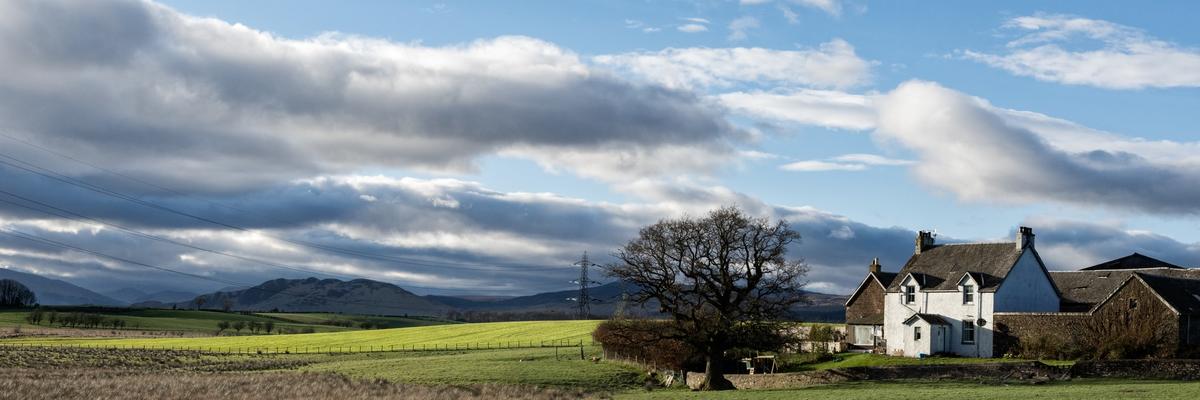Commentary
Alice Hague
16 December 2021
One aspect of the recent COP26 climate conference in Glasgow that didn’t make many headlines was how action on climate adaptation has risen up the international agenda. This recognises that action is needed to respond to the impacts of climate change, alongside action to reduce emissions.
Much of the discussion at COP26 focused around global financial commitments to support adaptation measures for the people most vulnerable to the impacts of a changing climate, such as building more resilient infrastructure, improving flood defences and early warning systems, and protecting and restoring habitats to build natural defences and support more sustainable ways of using land. But COP26 also emphasised that adaptation is a place-based issue, an issue that impacts communities at the local level, and needs locally led responses.
My PCAN Fellowship involves working with Climate Ready Aberdeenshire, a place-based initiative for climate action in the north-east of Scotland. Working with local government, public and private sector organisations and representatives, I have been asking questions of how organisations work together to take action for climate adaptation at the local level.
What is climate adaptation?
One of the first challenges when discussing climate adaptation is to understand what we mean by adaptation, and to understand what actions an organisation or company can take for adaptation. In talking with organisations in the north-east of Scotland, it’s clear that the push for ‘net zero’ carbon emissions has been a great motivator to reduce emissions. Public bodies in Scotland are required to report annually on actions taken to reduce emissions, and private sector investors are increasingly seeing emissions reductions as a core part of their ESG (environment, social, governance) responsibilities. With the clear need to reduce emissions, conversations around climate change often focus on measures taken at all levels to reduce the climate impact of operations, whether that’s reducing energy demand, reducing business travel, or switching to alternative sources of heat.
Yet alongside emissions reductions, the need for adaptation is also important. Research tells us the likely impacts of a changing climate: the north-east of Scotland will likely experience warmer, drier summers, and wetter, stormier winters, with excessive rainfall and changing snowmelt patterns (Aberdeenshire Council, Local Climate Impact Profile, 2019). The north-east of Scotland has already experienced the impacts of adverse weather conditions: Storm Frank (December 2015) caused severe flooding, destroying roads and bridges and impacting communities; the warm, dry summer of 2018 resulted in water shortages for people relying on private (non-mains) water supplies; and a landslide caused by heavy rainfall resulted in a train derailment and a tragic loss of life at Carmont, near Stonehaven (August 2020).
Adaptation in rural areas
Given that more than 50% of the world’s population live in cities, much of the focus of climate action is at the city level. Yet rural areas are taking action in different ways – and have different challenges.
My research highlights the importance of connectivity for rural areas when thinking about climate adaptation: infrastructure, supply routes, and the large number of bridges are at great risk from extreme weather caused by climate change. Learning from the experience of Storm Frank, one damaged bridge can impact a much wider area in terms of access (including e.g. for emergency services) and supplies beyond the immediate area of flooding. Indeed research also tells us the importance of a ‘focusing event’ – such as Storm Frank – for stimulating further adaptation actions, with organisations suddenly required to both respond to short-term needs, and consider where longer term investment is required.
The hyper-local aspect of climate adaptation is also important. Cash-strapped local councils face challenges about where to spend limited resources of time and money, especially when considering that some impacts of climate change might only affect a very small number of people or properties, but affect them significantly.
An additional concern raised by research participants was about the impact of young people moving away from the north-east, and taking their climate-solution-focused ideas and energy with them. The vast diversity of rural areas – large coastlines, substantial areas of agricultural land, dispersed populations – mean that climate adaptation measures in one area can be vastly different than in another. And while local councils have responsibilities for some issues relating to climate adaptation, partnership working with other public bodies, businesses and communities is an important part of making progress on adaptation.
Conclusion
So, while some of the topics addressed at COP26 can seem very high level, and very distant from the situation on the ground, the reality is that discussions and decisions taken by countries at COP26 impact policy decisions at the national level, which influences, and needs, local-level action to be implemented.
Local-level action, and leadership from local councils, as well as public and private sector organisations, is important in engaging people and communities to understand the likely future impacts of climate change, and to help point them towards resources at a local and community level, to help adapt to the already inevitable impacts of the climate crisis.
Alice Hague is an environmental social scientist at the James Hutton Institute in Aberdeen and a PCAN Fellow
Image: Gary Ellis, Unsplash

